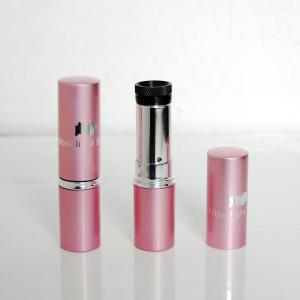1.Application
The OPI One Step Opiate Test Strip is a lateral flow chromatographic immunoassay for the detection of Opiates in urine at a cut-off concentration of 300 ng/mL.
Opiate refers to any drug that is derived from the opium poppy, including the natural products, Morphine and codeine, and the semi-synthetic drugs such as heroin. Opioid is more general, referring to any drug that acts on the opioid receptor.
Opioid analgesics comprise a large group of substances which control pain by depressing the central nervous system. Large dose of Morphine can produce higher tolerance levels, physiological dependency in users, and may lead to substance abuse. Morphine is excreted unmetabolized, and is also the major metabolic product of codeine and heroin. Morphine is detectable in the urine for several days after an opiate dose.
The OPI One Step Opiate Test Strip is a rapid urine screening test that can be performed without the use of an instrument. The test utilizes a monoclonal antibody to selectively detect elevated levels of Morphine in urine. The OPI One Step Opiate Test Strip yields a positive result when the Morphine in urine exceeds 300 ng/mL. This is the suggested screening cut-off for positive specimens set by the Substance Abuse and Mental Health Services Administration (SAMHSA, USA)
2. Usage:
Allow test device, urine specimen, and/or controls to equilibrate to room temperature (15-30°C) prior to testing.
- Bring the pouch to room temperature before opening it. Remove the test device from the sealed pouch and use it as soon as possible.
- Place the test device on a clean and level surface. Hold the dropper vertically and transfer 3 full drops of urine (approx. 100mL) to the specimen well (S) of the test device, and then start the timer. Avoid trapping air bubbles in the specimen well (S). See the illustration below.
-
Wait for the colored line(s) to appear. The result should be read at 5 minutes. Do not interpret the result after 10 minutes

INVALID: Control line fails to appear. Insufficient specimen volume or incorrect procedural techniques are the most likely reasons for control line failure. Review the procedure and repeat the test using a new test device.


Accurate and fast result.
Q1: What's the method u use to do the test?
A: Colloidal Gold Method.
Q2: What's ur MOQ ?
A: Always, for strip format, the MOQ is 5000pcs. While for cassette format, MOQ is 2000pcs, same as midstream.
Q3: What's ur packing of the tests?
A: If u choose the low cost, we will suggest u the bulk packing to go. Which means 1 test in a single pouch, then 100/40 pouches in a plastic bag, 50 bags in a carton. If u need to sell in pharmacy/chain shop or some countries which have strict requirements about the packing, u can choose to pack in a box, like 100pcs in a box, or even 1 test in a single box.
Q4: What's the main differences when comparing products from different suppliers?
A: U can compare the mainly features of the test: Accuracy, Sensitivity, Specificity, and then the Price.
Q5: Some tests can be tested with serum/plasma or with whole blood, so what's the difference?
A: Well, if the specimen is whole blood, people will need buffer, lancet and alcohol swab to help the test. If they buy all the accessories, they can test very easily at home. But if the specimen is serum/plasma, it will need centrifuge to separate serum from whole blood first. This way, it's better to use at lab or hospital. And in some words, serum/plasma test will always give a more accurate results.
Q6: How can i distinguish a good test kit?
A: U can judge from the 4facts:Technical data: Such as the accuracy, specificity and sensitivity.
Pouch sealing: Tight enough. If the foil pouch is not sealed well, the humidity in circustance will destroy the reactivity of antibodies labeled on NC membrane. Shelf life will be shorten down.
Flow speed: The shorter the better?? NO!! The reaction of antibodies on NC membrane and antigens in specimen usually requires quite a while to work sufficiently. U can refer to the instruction for more accurate time.
Background: Good test usually gives clean background after running. If there are red smears in the reading window, it usually caused by bad colloidal gold technology or bad NC membrane. Sometimes, the defect caused false positive result in practice



